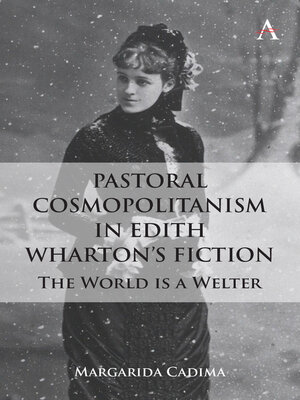Pastoral Cosmopolitanism in Edith Wharton's Fiction
ebook ∣ The World is a Welter · Anthem Studies in Global English Literatures
By Margarida Cadima

Sign up to save your library
With an OverDrive account, you can save your favorite libraries for at-a-glance information about availability. Find out more about OverDrive accounts.
Find this title in Libby, the library reading app by OverDrive.



Search for a digital library with this title
Title found at these libraries:
| Library Name | Distance |
|---|---|
| Loading... |
American novelist Edith Wharton (1862–1937) is best known today for her tales of the city and the experiences of patrician New Yorkers in the "Gilded Age." This book pushes against the grain of critical orthodoxy by prioritizing other "species of spaces" in Wharton's work. For example, how do Wharton's narratives represent the organic profusion of external nature? Does the current scholarly fascination with the environmental humanities reveal previously unexamined or overlooked facets of Wharton's craft? I propose that what is most striking about her narrative practice is how she utilizes, adapts, and translates pastoral tropes, conventions, and concerns to twentieth-century American actualities. It is no accident that Wharton portrays characters returning to, or exploring, various natural localities, such as private gardens, public parks, chic mountain resorts, monumental ruins, or country-estate "follies." Such encounters and adventures prompt us to imagine new relationships with various geographies and the lifeforms that can be found there. The book addresses a knowledge gap in Wharton and the environmental humanities, especially recent debates in ecocriticism. The excavation of Wharton's words and the background of her narratives with an eye to offering an ecocritical reading of her work is what the book focuses on.
|This book sets forth how the "greening" of Wharton's private and public writings contributes to exciting strands in cultural geography and recent postcolonial theory: for example, biological and political constructions of citizenship, mobility, race, and nation; hospitality and hostility toward the "Other"; fraught experiences of exile and competing conceptions of home/land; trans/national selfhood; the figure of the nomad, the outcast, or the wanderer. Ultimately, it will address this question: What are the issues, broadly speaking what motivates an ecocriticism, how does that address the challenges of cultural geography, why can we uncover meaning by turning to Wharton? The argument made is that a reading of Wharton's fiction can help reveal how to understand those issues. This book situates Wharton as an author who is acutely responsive to pastoral tropes and terrain, among other species of spaces. She addresses the affective and geographical resonances of such sites, especially sparsely populated localities and landforms—voguish mountain resorts, private ornamental gardens, lush public parks, monumental and "sham" ruins—which offered pampered American socialites a brief escape from the "welter." I wish to complicate popular perceptions of "Wharton's world"—reinforced by numerous handsomely produced cinematic and television adaptations of her novels—as one rooted in often-opulent domestic interiors with their waspish social cliques, strict rules of politesse, and elaborate hierarchies.
Indeed, one of the central aims of this book is to treat pastoral as a kind of palimpsest—a "parchment" upon which successive generations of artist-pilgrims have etched their impressions, constantly revising its imagery, formal procedures, and lyrical effects. This notion of the palimpsest also reinforces how my research seeks to extend the range of Wharton studies. First of all, my close reading of selected texts adds another "layer" of sophistication to the ever-evolving field of ecocriticism, whose core ideas and critical standpoints have assumed both an urgency and galvanizing potency given the seismic upheaval to our material localities around the globe—some of the most damaging tornadoes in US history; flooding in the American Midwest; devastating earthquakes in Haiti, China, and Japan; stronger and more...







